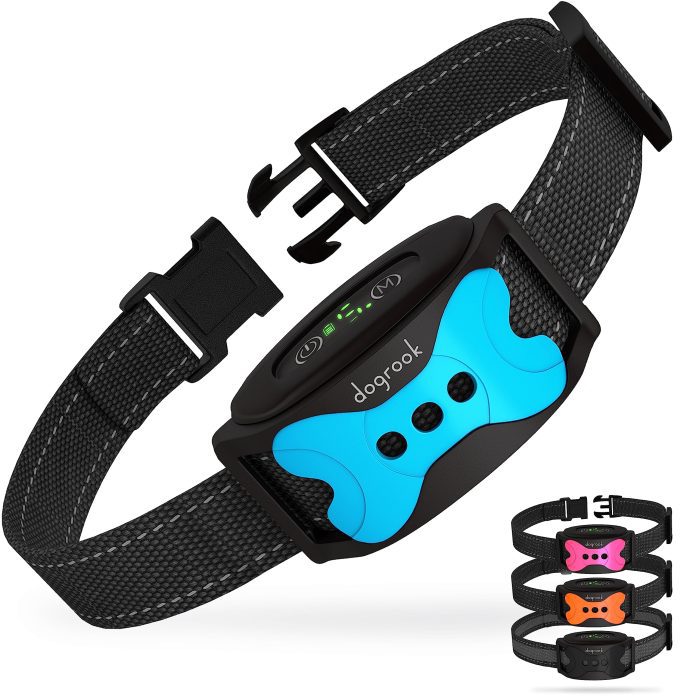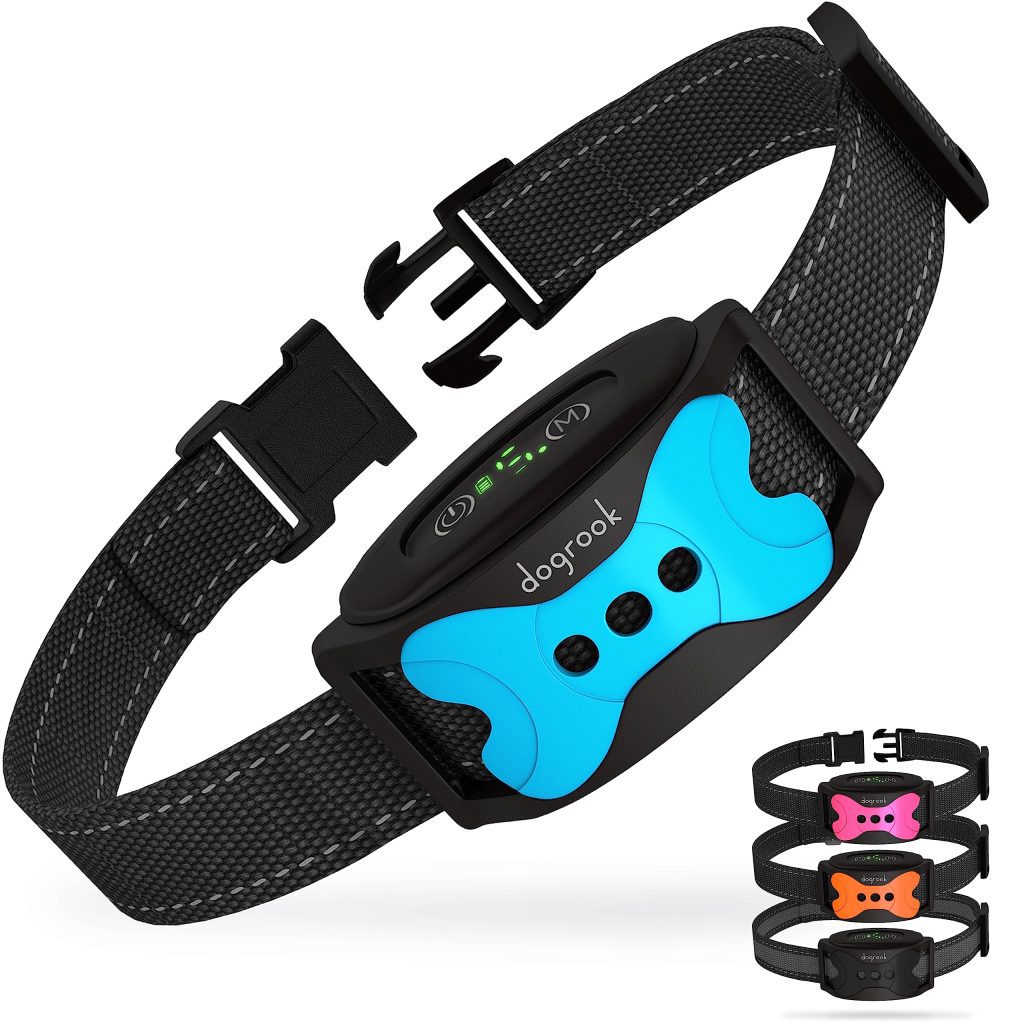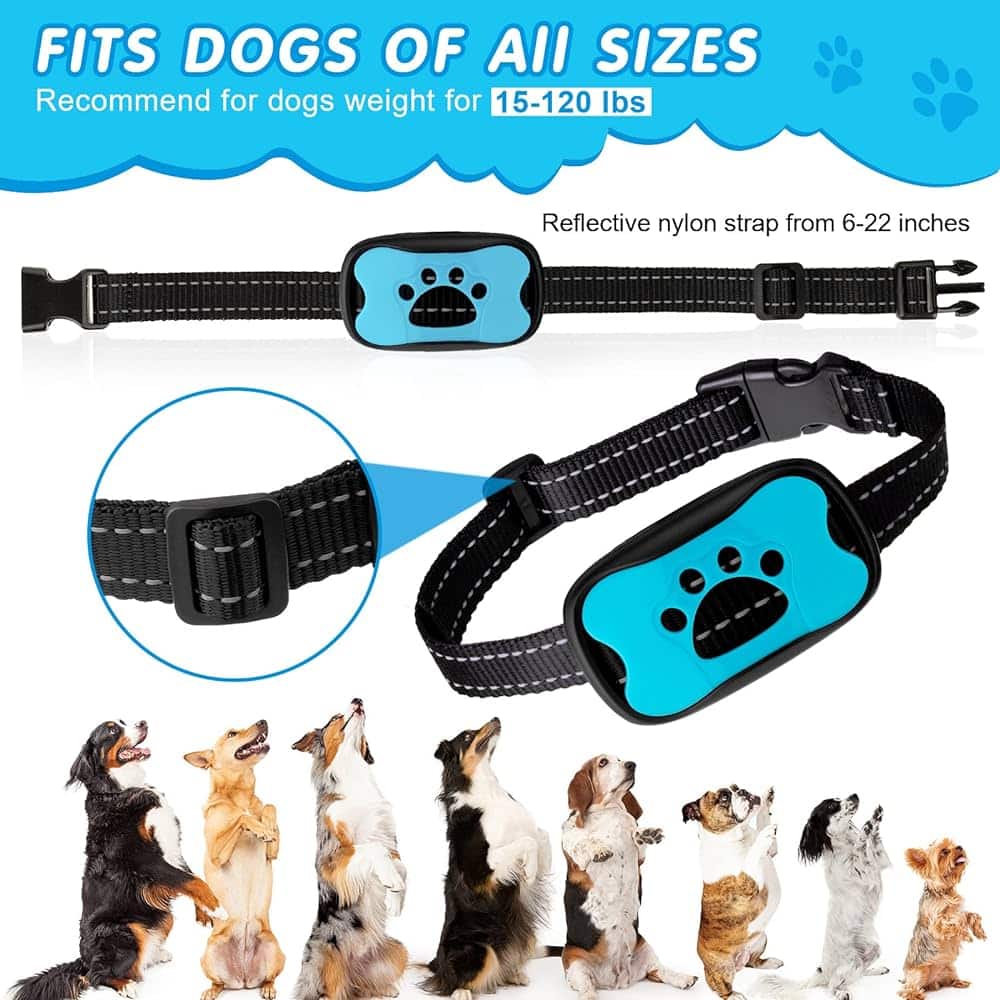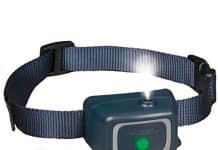Curious about whether or not vibration collars can effectively put an end to incessant barking? Look no further! In this article, we explore the potential effectiveness of these collars in curbing unwanted barking behaviors in dogs. We will delve into the various features and mechanisms of vibration collars, as well as their potential benefits and drawbacks. So, if you’ve ever wondered if vibration collars are the solution to your dog’s excessive barking, keep reading to find out more.
How Vibration Collars Work
Vibration collars, also known as vibration bark collars or anti-bark collars, are devices designed to reduce or eliminate excessive barking in dogs. These collars work by delivering a vibration sensation to the dog’s neck whenever they engage in barking behavior. The vibration serves as a distraction and can be used as a training tool to discourage barking.
Mechanism
The mechanism of vibration collars is relatively simple. Typically, an accelerometer or microphone detects the dog’s vocalization or barking, triggering the collar to emit a gentle vibration. The vibration is usually mild and not intended to cause pain or harm to the dog. Instead, it aims to interrupt the barking behavior and redirect the dog’s attention.
Types of Vibration Collars
There are various types of vibration collars available on the market. Some collars rely solely on vibration as a deterrent, while others may combine vibration with other stimuli, such as sound or static correction. The choice of collar depends on the individual dog’s needs and the owner’s preferences. It is crucial to select a collar that is appropriate for the specific situation and the dog’s temperament.
Effectiveness of Vibration Collars
When considering the effectiveness of vibration collars, it is essential to examine existing studies and research, success rates, and factors that may influence their effectiveness.
Studies and Research
Several studies have been conducted to evaluate the effectiveness of vibration collars in managing excessive barking. While some studies indicate positive results, it is important to note that individual dog responses may vary. Therefore, it is crucial to consider other factors and evaluate the collar’s effectiveness on a case-by-case basis.
Success Rates
Success rates of vibration collars can vary depending on the individual dog and the underlying causes of excessive barking. It is crucial to have realistic expectations and understand that while these collars can be effective for some dogs, they may not work for every canine. It is important to consult with a professional trainer or veterinarian to determine the suitability of a vibration collar for your dog’s specific needs.
Factors Affecting Effectiveness
Various factors can influence the effectiveness of vibration collars. These include the dog’s temperament, the intensity and duration of the barking behavior, and the consistency of training. Dogs with strong-willed personalities or severe anxiety may require additional training methods or a different approach. It is important to consider these factors before relying solely on a vibration collar as a solution to excessive barking.
This image is property of Amazon.com.
Benefits of Vibration Collars
Vibration collars offer several benefits when used appropriately and in conjunction with proper training techniques. These collars provide a non-harmful alternative to other corrective measures and can be a valuable training aid.
Non-Harmful Alternative
One of the key benefits of vibration collars is that they provide a non-harmful alternative to traditional training methods. Unlike harsher forms of correction, such as electric shock collars, vibration collars rely on a gentle vibration to redirect the dog’s attention and discourage barking. This can be especially beneficial for sensitive dogs or those who may be negatively affected by more aversive techniques.
Training Aid
Vibration collars can serve as a valuable training aid in teaching dogs appropriate behavior. By providing a consistent and immediate feedback mechanism, these collars help reinforce desired behaviors and discourage excessive barking. When used in conjunction with positive reinforcement techniques, such as treats or praise, vibration collars can expedite the training process and promote better communication between dogs and owners.
Improved Communication
One of the challenges in training dogs is effectively communicating our expectations to them. Vibration collars can aid in this communication by providing a clear and consistent signal to the dog when their barking becomes excessive. This can help the dog understand the desired behavior more quickly and reduce confusion or frustration on both ends.
Reduced Disturbance
Excessive barking can be a source of disturbance and annoyance, both for dog owners and their neighbors. Vibration collars can help address this issue by minimizing the frequency and intensity of barking. By reducing excessive barking, these collars contribute to a more peaceful living environment for both the dog and those around them.
Potential Drawbacks of Vibration Collars
While vibration collars can be effective in many cases, it is important to recognize and consider potential drawbacks before deciding to use them.
Limited Effectiveness in Some Cases
While vibration collars can be a valuable tool in reducing excessive barking, they may not be effective for all dogs or in all situations. Dogs with underlying behavioral issues or severe anxiety may require a more comprehensive approach that addresses the root cause of the barking behavior. It is important to seek professional advice in cases where excessive barking persists despite using a vibration collar.
Possible Negative Association
There is a potential risk that a dog may associate the vibration collar with the presence of certain triggers or specific situations rather than their barking behavior. This association can lead to anxiety or fear in the dog, which is counterproductive to the desired outcome. It is crucial to monitor the dog’s response and consult with a professional trainer to ensure that the collar is not causing any negative associations.
Inconsistent Results
The effectiveness of vibration collars can vary from dog to dog. Factors such as breed, temperament, and individual learning capabilities can influence the collar’s effectiveness. It is important to have realistic expectations and consider other training methods or behavioral interventions if the collar does not yield consistent results.
Lack of Tailored Training
While vibration collars can be a valuable addition to a training regimen, they should not be relied upon as the sole method of addressing excessive barking. Each dog is unique, and a comprehensive training plan that takes into account the dog’s specific needs, temperament, and underlying reasons for barking is essential. Proper training and behavior modification regimens should be tailored to the individual dog’s requirements.
This image is property of Amazon.com.
Choosing the Right Vibration Collar
When selecting a vibration collar for your dog, it is important to consider several factors to ensure its suitability and effectiveness.
Consideration Factors
Some important factors to consider when choosing a vibration collar include the dog’s size, breed, and temperament. Additionally, it is important to consider the collar’s fit, durability, and ease of use. Consulting with a professional trainer or veterinarian can also be helpful in selecting the right collar for your dog’s specific needs.
Different Features
Vibration collars can vary in terms of features and functionalities. Some collars may offer adjustable vibration intensities or sensitivity levels, while others may include additional stimuli, such as sound or static correction. Understanding the specific features and their applicability to your dog’s training needs can help in selecting the most appropriate collar.
Adjustability and Sensitivity Options
The adjustability and sensitivity options of a vibration collar are crucial for tailoring the training to your dog’s needs. The collar should allow for fine-tuning to ensure that the vibration level is appropriate and not excessive. It is important to start with the lowest intensity and gradually increase if needed, while still considering the dog’s comfort and well-being.
Proper Usage and Training Techniques
To maximize the effectiveness of vibration collars, it is important to incorporate proper usage and training techniques.
Appropriate Fit and Comfort
Ensuring that the vibration collar fits properly and is comfortable for the dog is essential. The collar should not be too tight or too loose, as improper fit can cause discomfort or injury. Regular checks of the fit and allowing breaks from wearing the collar can contribute to the dog’s overall well-being and compliance.
Gradual Introduction and Positive Reinforcement
When introducing a vibration collar, it is recommended to do so gradually and in a positive manner. Associating the collar with positive reinforcement, such as treats or praise, can help create a positive association and reduce any potential anxiety or fear. A gradual introduction allows the dog to adapt to the collar and understand the purpose behind the vibration sensation.
Consistency and Timing
Consistency is crucial when using a vibration collar as a training aid. The collar should be used consistently, following a predetermined plan or training regimen. Timing is also important, as the collar should be activated at the moment the dog engages in excessive barking. This helps the dog understand the cause and effect relationship between their behavior and the vibration collar.
Avoidance of Overuse
While vibration collars can be effective, it is important to avoid overusing them. Overuse of a vibration collar can desensitize the dog to the sensation or potentially cause unnecessary stress. It is important to strike a balance and only use the collar when necessary and in conjunction with other positive reinforcement techniques.
This image is property of Amazon.com.
Legal and Ethical Considerations
Before using a vibration collar, it is crucial to be aware of legal and ethical considerations surrounding their usage.
Laws and Regulations
Laws and regulations regarding the use of vibration collars can vary depending on the jurisdiction. It is important to familiarize oneself with local laws and any restrictions or guidelines in place. In some areas, certain types of collars may be prohibited, while in others, their usage may be strictly regulated.
Humaneness of Vibration Collars
When using any training tool, it is important to prioritize the well-being and safety of the dog. Vibration collars, when used appropriately and in conjunction with positive reinforcement techniques, are generally considered to be a humane option for addressing excessive barking. However, it is crucial to be attentive to the dog’s response and well-being, recognizing that individual dogs may have different thresholds and sensitivities.
Alternative Training Methods
While vibration collars can be effective, they are not the only training method available. It is important to consider alternative training methods, such as positive reinforcement training or behavior modification techniques, that may be better suited for certain dogs or specific situations. Consulting with a professional trainer or behaviorist can help identify the most appropriate training approach for your dog.
Additional Tips and Precautions
In addition to the above considerations, there are a few additional tips and precautions to keep in mind when using vibration collars.
Consulting with a Professional
Before introducing a vibration collar, it is advisable to consult with a professional trainer or behaviorist. They can provide guidance on the proper usage, training techniques, and potential alternative methods based on your dog’s specific needs and circumstances. Their expertise can help ensure the collar is used effectively and safely.
Monitoring Your Dog’s Reaction
It is essential to closely monitor your dog’s reaction to the vibration collar. Pay attention to any signs of distress, anxiety, or fear. If the collar is causing excessive stress or is not effectively reducing the barking behavior, it may be necessary to reassess the training approach or seek advice from a professional.
Avoiding Continuous Wearing
Vibration collars should not be worn continuously or for extended periods of time. It is important to provide breaks from wearing the collar to prevent any potential discomfort or irritation to the dog’s neck. Following the manufacturer’s guidelines on duration of usage is crucial to ensure the dog’s safety and well-being.
Regular Checks and Maintenance
Regularly check the collar to ensure it is in proper working condition. Replace batteries as needed, clean the collar, and check for any signs of wear or damage. Regular maintenance ensures that the collar functions as intended and helps prevent any potential malfunctions or safety issues.
This image is property of assets.petco.com.
Common Myths and Misconceptions
There are several common myths and misconceptions surrounding vibration collars that should be addressed.
Vibration Collars as Cruel Devices
One prevalent myth is that vibration collars are cruel and inhumane. However, when used appropriately and in conjunction with positive reinforcement techniques, vibration collars are generally considered to be a humane alternative to other training methods. The collar’s purpose is to interrupt excessive barking and encourage more desirable behavior.
Ability to Completely Stop Barking
Another misconception is that vibration collars can completely eliminate barking. While vibration collars can be effective in reducing excessive barking, it is important to note that barking is a natural behavior for dogs, and in some cases, it may be unreasonable to expect complete cessation of barking. The goal should be to manage and reduce excessive barking, rather than eliminate it entirely.
Long-Term Effects on Behavior
Some individuals may worry about potential long-term effects of vibration collars on a dog’s behavior. When used appropriately and in conjunction with positive reinforcement techniques, the long-term effects are generally positive. Vibration collars can aid in training and behavior modification, contributing to improved communication and a more harmonious relationship between dog and owner.
Conclusion
Vibration collars can be effective tools in managing excessive barking in dogs. When used appropriately, in conjunction with proper training techniques, and with consideration of the individual dog’s needs, these collars provide a non-harmful alternative and help improve communication between dogs and owners. However, it is important to recognize that vibration collars may not be effective for every dog, and alternative training methods or behavioral interventions may be necessary in some cases. Consulting with a professional trainer or behaviorist can provide valuable guidance and support throughout the training process.
This image is property of doghousetimes.com.





























![SportDOG Dog Training Collars [New X-Series] Dog Training Collars](https://supredog.com/wp-content/uploads/2019/03/Dog-Training-Collars-100x70.jpg)















